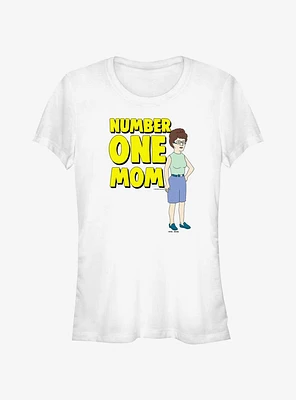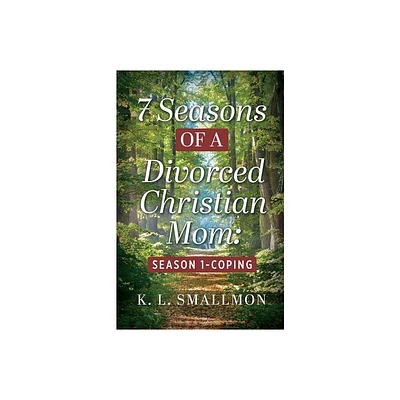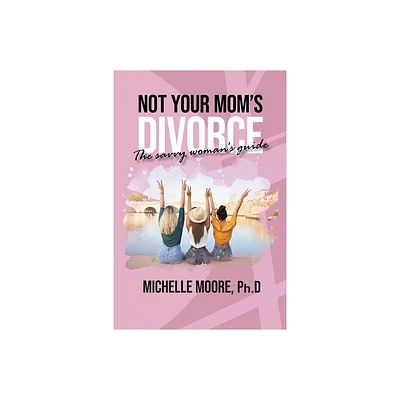Home
Divorcing a Narcissist: One Mom's Battle
Loading Inventory...
Barnes and Noble
Divorcing a Narcissist: One Mom's Battle
Current price: $19.99


Barnes and Noble
Divorcing a Narcissist: One Mom's Battle
Current price: $19.99
Loading Inventory...
Size: OS
*Product Information may vary - to confirm product availability, pricing, and additional information please contact Barnes and Noble
Tina Swithin was swept off her feet by a modern-day Prince Charming. Her relationship with Seth moved quickly and after 18 months, they were married. It wasn't long before Tina discovered that her fairytale was built on lies, fraud and deception. This wasn't the man she married,
or was it?
Through Tina's lens, readers will see how a smart, independent woman can fall prey to a narcissist. Tina discusses the red flag reflections that she didn't initially recognize as warning signs because the red flags were often hidden within bouquets of red roses. Giving the benefit of the doubt and trying to see the best in Seth came at a great cost. After seven years of marriage, Tina found herself in a therapist's office. For years, she had been told by Seth that she was the problem. Her therapist delivered three life-changing words; "narcissistic personality disorder." Initially unable to accept that she could not fix her marriage or her husband, Tina began to research narcissism and personality disorders while connecting with experts around the world. Tina soon discovered that there is only one thing more difficult than being married to a narcissist and that is divorcing a narcissist. When Tina's plight to protect her children began, she was forced to act as her own attorney due to severe financial abuse. Tina quickly discovered a flawed family court system that prioritized Seth's parental rights over her children's rights to safety. Tina experienced repeated institutional betrayal at the hands of child welfare services, law enforcement, child custody evaluators, minor's counsel and judicial officers yet, she would not give up. Tina refused to accept that shared parenting, or 50-50 custody arrangements were in her daughter's best interest, and she set her sights on learning the system inside and out. Tina became a fixture in the courthouse and at hearings, studying high-conflict cases that were similar to hers, watching court proceedings, and talking to attorneys in the court hallways. A painful realization was that to the court system, her custody battle was just a business transaction and a case number. Through radical acceptance and with her growing knowledge of the family court system, Tina began to embrace the importance of strategy versus emotion. Tina's story is the story of one mom's battle to protect her children in the patriarchal, antiquated family court system but, her story is the story of thousands of mothers around the world. There are identifiable patterns of the family court system's failure to recognize coercive control as domestic violence and there is a lack of training within the system on important topics such as domestic violence, narcissism and post separation abuse. Tina's story shines a glaring light on the darkness that is the present-day family court system and highlights the need for education, intervention, legislation and court reform. Tina's story showcases the harsh, painful reality that victims of domestic violence face when they make the brave decision to leave their abuser. Namely, the abuser's need for power and control doesn't mysteriously vanish or dissipate when the relationship ends. Tina's ex-husband was triggered by the loss of control and his effort to maintain power and control intensified. For Tina, the post separation abuse continued to escalate and far surpassed the abuse she was subjected to while under the same roof. Seth set his sights on the child(ren) to exert control and the children become nothing more than pawns and weapons. By many, Tina Swithin is considered to be one of the lucky ones for finally securing peace and safety for her family. For anyone to read about Tina's ten-year battle to protect her children and label her as "lucky" speaks volumes about the brokenness of the family court system.
or was it?
Through Tina's lens, readers will see how a smart, independent woman can fall prey to a narcissist. Tina discusses the red flag reflections that she didn't initially recognize as warning signs because the red flags were often hidden within bouquets of red roses. Giving the benefit of the doubt and trying to see the best in Seth came at a great cost. After seven years of marriage, Tina found herself in a therapist's office. For years, she had been told by Seth that she was the problem. Her therapist delivered three life-changing words; "narcissistic personality disorder." Initially unable to accept that she could not fix her marriage or her husband, Tina began to research narcissism and personality disorders while connecting with experts around the world. Tina soon discovered that there is only one thing more difficult than being married to a narcissist and that is divorcing a narcissist. When Tina's plight to protect her children began, she was forced to act as her own attorney due to severe financial abuse. Tina quickly discovered a flawed family court system that prioritized Seth's parental rights over her children's rights to safety. Tina experienced repeated institutional betrayal at the hands of child welfare services, law enforcement, child custody evaluators, minor's counsel and judicial officers yet, she would not give up. Tina refused to accept that shared parenting, or 50-50 custody arrangements were in her daughter's best interest, and she set her sights on learning the system inside and out. Tina became a fixture in the courthouse and at hearings, studying high-conflict cases that were similar to hers, watching court proceedings, and talking to attorneys in the court hallways. A painful realization was that to the court system, her custody battle was just a business transaction and a case number. Through radical acceptance and with her growing knowledge of the family court system, Tina began to embrace the importance of strategy versus emotion. Tina's story is the story of one mom's battle to protect her children in the patriarchal, antiquated family court system but, her story is the story of thousands of mothers around the world. There are identifiable patterns of the family court system's failure to recognize coercive control as domestic violence and there is a lack of training within the system on important topics such as domestic violence, narcissism and post separation abuse. Tina's story shines a glaring light on the darkness that is the present-day family court system and highlights the need for education, intervention, legislation and court reform. Tina's story showcases the harsh, painful reality that victims of domestic violence face when they make the brave decision to leave their abuser. Namely, the abuser's need for power and control doesn't mysteriously vanish or dissipate when the relationship ends. Tina's ex-husband was triggered by the loss of control and his effort to maintain power and control intensified. For Tina, the post separation abuse continued to escalate and far surpassed the abuse she was subjected to while under the same roof. Seth set his sights on the child(ren) to exert control and the children become nothing more than pawns and weapons. By many, Tina Swithin is considered to be one of the lucky ones for finally securing peace and safety for her family. For anyone to read about Tina's ten-year battle to protect her children and label her as "lucky" speaks volumes about the brokenness of the family court system.


















